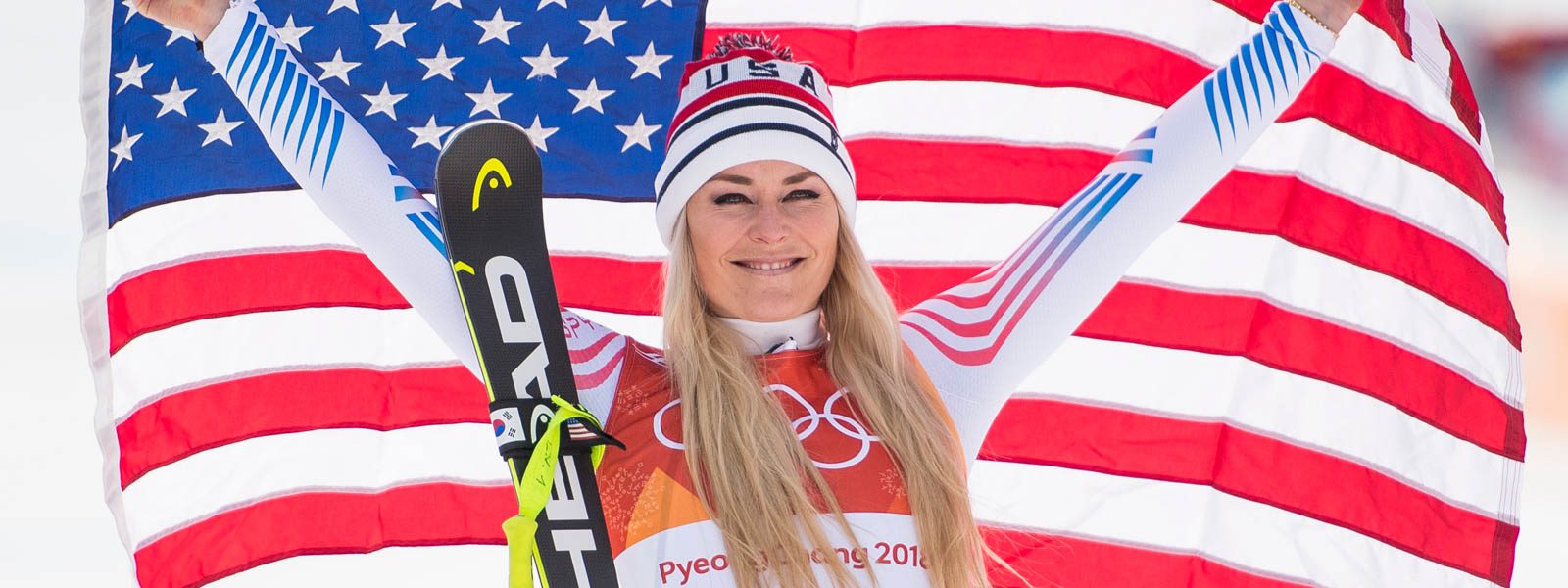The Truth about Helmets
Are new FIS standards making the sport any safer in the U.S.?
In the wake of the recent news that all ski racers from U14 up must wear a helmet that adheres to new FIS regulations, many athletes and parents are left scratching their heads. Increased testing standards saw officials dropping the helmets at twice the velocity — but does that mean the noggin protectors can really provide peace of mind?
Dr. Jasper Shealy, a Vermont-based expert in winter sports safety who’s spent the past 40 years studying snow injuries reported at Sugarbush, recently gave SkiRacing.com an exclusive perspective on what a helmet actually does.

Andrew Weibrecht charges the downhill in Sallbach-Hinterglemm in 2015. GEPA
Glancing Blows Versus Direct Impacts
Helmets offer protection from glancing blows, the most common kind of head injuries, says Dr. Shealy. “If you were traveling on a flat surface of some kind, lets say at 60 miles per hour, and you fall,” he explains, “the impact speed of your head against the snow surface is not 60 mph – it’s really just the speed of the drop. And that’s the reason I think that helmets are so effective, because they protect you against those kinds of glancing blows.”
But for direct impacts at high speeds of up to 80 mph against a fixed object — a tree, a post or a tower — all bets are off, he says. “You’re going to need more than a helmet to save you,” says Dr. Shealy. “You might be able to design a helmet that can take a direct impact at 40 mph, but the head is connected to a body, and that body is not going to be able to withstand a direct impact at 40 mph.”

Scott Macartney trains at Beaver Creek in 2009. GEPA
Brain Buckets of Before
The older a helmet is, the more unsafe it is, explains Shealy, bringing up his studies. “When we looked at rental helmets, assuming a helmet did not take a significant impact, it could last around five to six years before it became less effective,” he says. “At some point, given that most helmets use Styrofoam or some other kind of rigid foam insulation for energy absorption, that material is going to deteriorate over time due to various ambient environmental influences — things like UV, chemicals, heat, etc.”
While Shealy says there isn’t a firm scientific basis for determining exactly when helmets should be replaced, he’d be wary of using a helmet more than five years old.

Picabo Street’s 2002 Olympic helmet wouldn’t fly today. GEPA
Drop Zone
“Dropping the helmets twice as high is probably just an arbitrary value and I don’t know that it’s based on any hard science,” says Shealy of the FIS testing. “It’s a cautious approach that probably will work, but who knows? There are new helmet designs and developments out there; I’m not aware that any of them at this point have been subjected to the test of time.”
Shealy adds that the new helmet tests, combined with biomechanical modeling, may add up to more safety. “But I haven’t seen any study that shows a decrease in injuries,” he says. “The thing that most current helmets don’t address is rotational injury — the brain rotates inside the skull, and there are some designs that are trying to address that. From my perspective, only time will tell if the new designs are effective.”
The Bottom Line for What Goes on Top
The FIS limitations on helmets have a ripple effect, increasing the pressure on course designers and course setters to focus on their own safety standards for layout and netting. The news also has some members of the ski racing community considering other recent innovations in ski racing safety including spinal protectors. Neither of these had been made mandatory for speed skiers — the FIS currently states that spinal protectors in speed events must adhere to wind resistance and strap safety specifications.
Families, meanwhile, are facing their own pressure of spending another $120 to $200 per head. Is it worth it? “My thinking is that, yeah, it’s going to cost more, but when you think about what a serious head injury might cost in terms of quality of life and just the medical cost of a traumatic brain injury,” says Shealy, “the rule is probably justified.”

More than ever, proper B-netting is key. GEPA
More Stories to Wrap Your Head Around
No sticker, no start: U14 and older athletes need this FIS helmet sticker
Gear Guide: Shred Mega Brain Bucket RH WhyWeShred
Gear Guide: Uvex meets new FIS standard with lighter, safe helmet





















